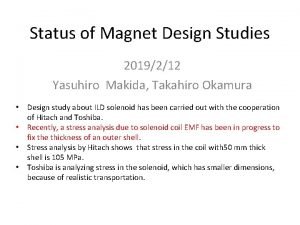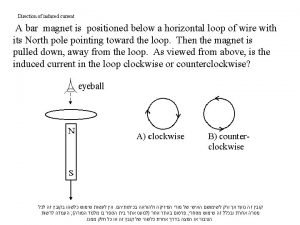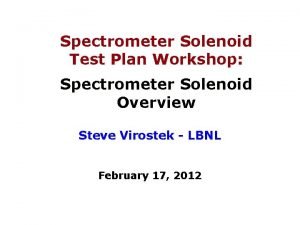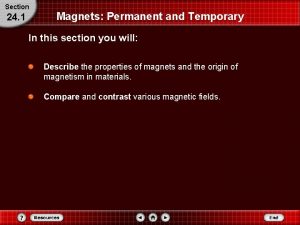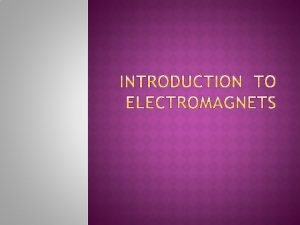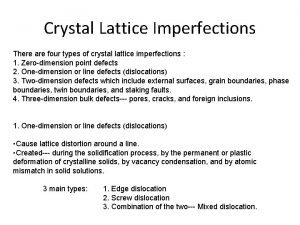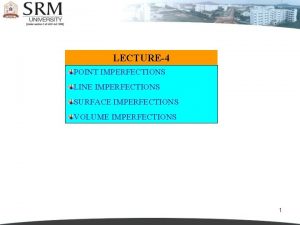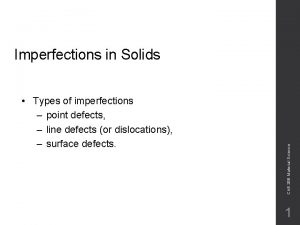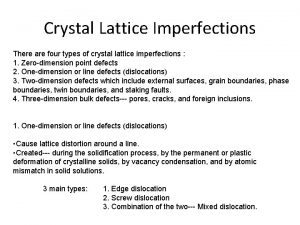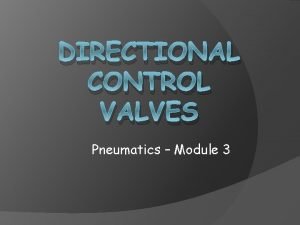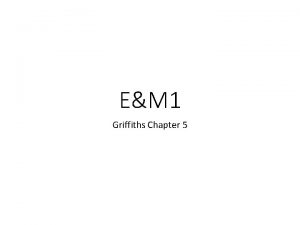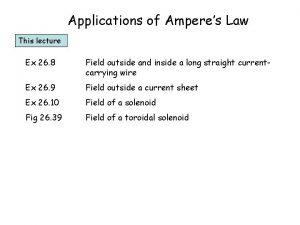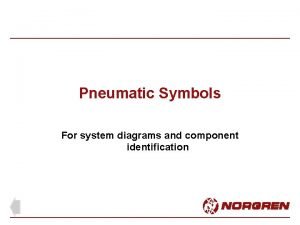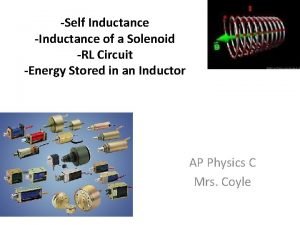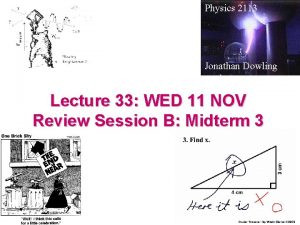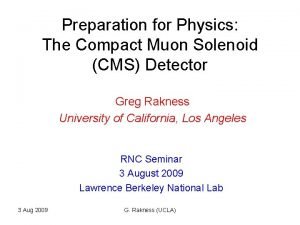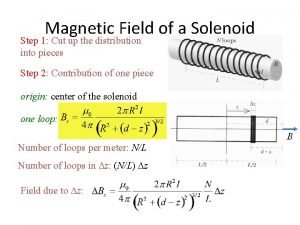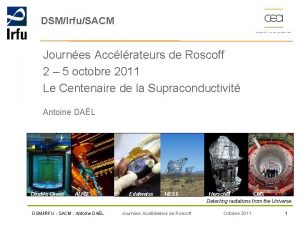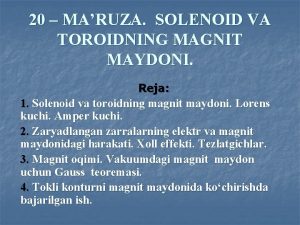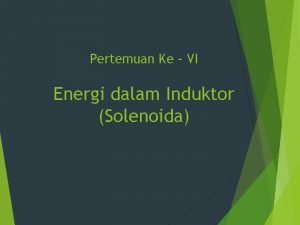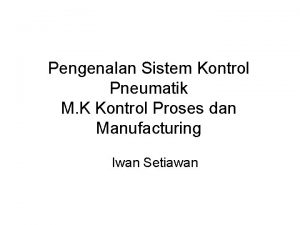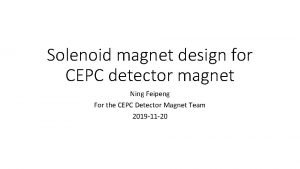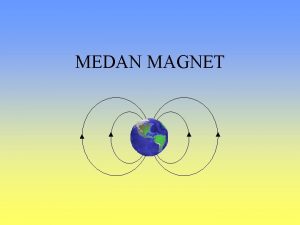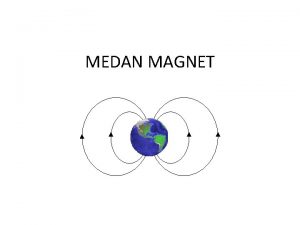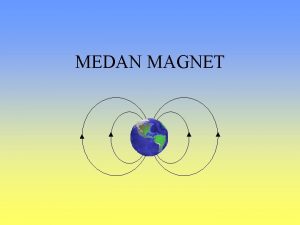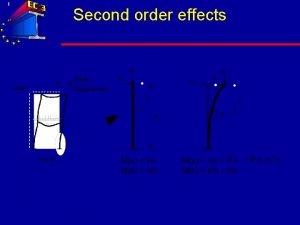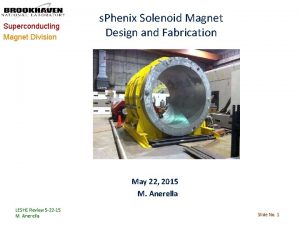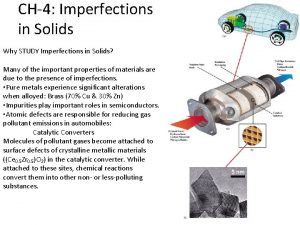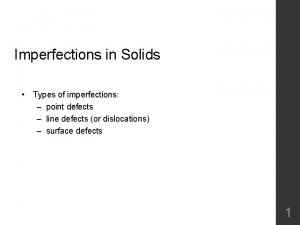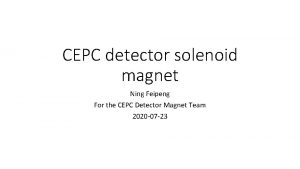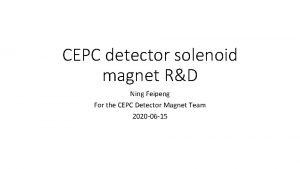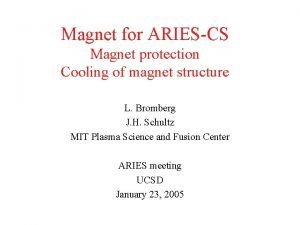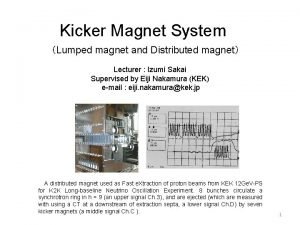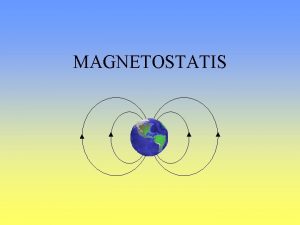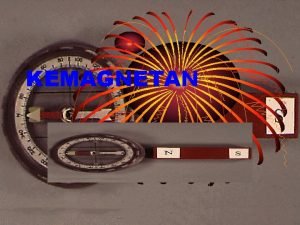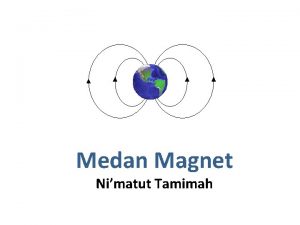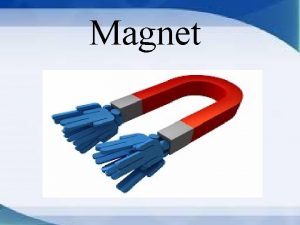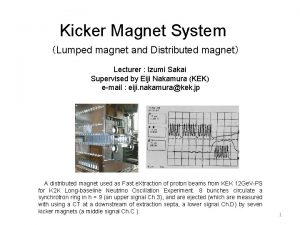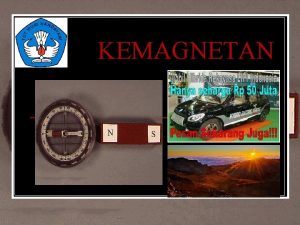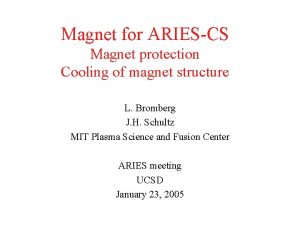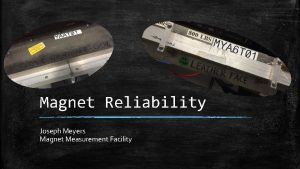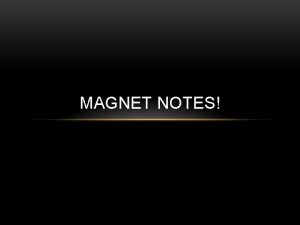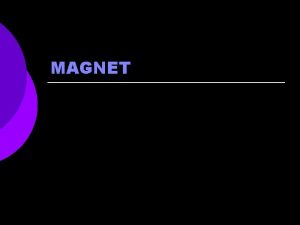Effects of detector solenoid magnet imperfections on dynamic
























- Slides: 24

Effects of detector solenoid & magnet imperfections on dynamic aperture of JLEIC ion collider ring Vasiliy Morozov, Fanglei Lin, Guohui Wei, Yuhong Zhang (Jefferson Lab) Yunhai Cai, Yuri Nosochkov (SLAC) ICFA Mini-Workshop on Dynamic Apertures of Circular Accelerators Institute of High Energy Physics, Beijing, China November 1, 2017

Outline JLEIC overview Chromaticity compensation Dynamic aperture Alignment and field errors Multipoles Detector solenoid ICFA Mini-Workshop on DA, November 1, 2017 2

JLEIC Layout Electron complex – CEBAF – Electron collider ring 8 -100(400) Ge. V Ion complex – Ion source 3 -12 Ge. V – SRF linac (285 Me. V/u for protons) – Booster – Ion collider ring 8 Ge. V SRF Linac & Optimum detector location for minimizing background 2015 ar. Xiv: 1504. 07961 May 17 update: https: //eic. jlab. org/wiki/index. php/Main_Page ICFA Mini-Workshop on DA, November 1, 2017 3

Key Design Concepts High luminosity: high collision rate of short modest-charge low-emittance bunches – Small beam size • Small β* Short bunch length Low bunch charge, high repetition rate • Small emittance Cooling Beam Design • High repetition rate • Low bunch charge • Short bunch length • Small emittance – Similar to lepton colliders such as KEK-B with L > 2 1034 cm-2 s-1 Damping • Synchrotron radiation • Electron cooling IR Design • Small β* • Crab crossing High polarization: figure-8 ring design – Net spin precession zero – Spin easily controlled by small magnetic fields for any particle species Full acceptance primary detector including far-forward acceptance ICFA Mini-Workshop on DA, November 1, 2017 4

JLEIC Energy Reach and Luminosity CM Energy (in each scenario) Main luminosity limitation low space charge medium beam-beam high synchrotron radiation ICFA Mini-Workshop on DA, November 1, 2017 5

JLEIC Parameters (3 T option) CM energy Ge. V 21. 9 (low) 44. 7 (medium) 63. 3 (high) p e p e 40 3 100 5 100 10 Beam energy Ge. V Collision frequency MHz Particles per bunch 1010 0. 98 3. 7 3. 9 3. 7 Beam current A 0. 75 2. 8 0. 75 0. 71 Polarization % 80% 80% 80% 75% Bunch length, RMS cm 3 1 1 1 2. 2 1 Norm. emittance, hor / ver μm 0. 3/0. 3 24/24 0. 5/0. 1 54/10. 8 0. 9/0. 18 432/86. 4 Horizontal & vertical β* cm 8/8 13. 5/13. 5 6/1. 2 5. 1/1. 0 10. 5/2. 1 4/0. 8 Ver. beam-beam parameter 0. 015 0. 092 0. 015 0. 068 0. 008 0. 034 Laslett tune-shift 0. 06 7 x 10 -4 0. 055 6 x 10 -4 0. 056 7 x 10 -5 3. 6/7 3. 2/3 Detector space, up/down m Hourglass(HG) reduction Luminosity/IP, w/HG, 1033 cm-2 s-1 476 476/4=119 1 0. 87 0. 75 2. 5 21. 4 5. 9 ICFA Mini-Workshop on DA, November 1, 2017 6

Ion Collider Ring Layout Protons: 100 Ge. V/u (63 Ge. V/u in COM with 10 Ge. V e) Lead: 40 Ge. V/u (40 Ge. V/u in COM with 10 Ge. V e) Super-ferric magnets (cos under consideration as risk mitigation) p. / #2 p u. s atch p dis. m om e g ge om disp. m. su atc pp h #. / 3 no r SR m. + F. ec Arc, 261. 7 l. o o ne + tu b. m h tro atc m c el Polarimeter l. e t de 81. 7 . em / p. x e h m ea atc b m p. / p u p. s h #1 s i d tc ma. m geo s p. . pp future 2 nd R IP u s di ions IP ge disp om. s. m upp atc. / h# 3 ICFA Mini-Workshop on DA, November 1, 2017 7 m 5. 5 5 1 =

Chromaticity Compensation Schemes Large bh at CCB sextupoles for reasonable sextupole strength Large bx/by (or by/bx) ratio at X (Y) sextupoles for orthogonal X & Y correction Compensation of sextupole non-linear geometric effects Linear chromaticity correction Conventional two family interleaved sextupoles in periodic arc cells. Number of cells with sextupoles is chosen to make the total phase advance of 2 *integer for compensation of the sextupoles non-linear effects. FF sext Linear-x sext Arc cells CCB with two non-interleaved –I pairs of sextupoles with high b at the sextupoles. Good chromatic correction, cancellation of sextupole geometric effects. Preferred scheme Distributed interleaved –I sextupole pairs with small to moderate b. Less efficient correction, residual amplitude-dependent tune shift due to pairs overlap. ICFA Mini-Workshop on DA, November 1, 2017 8

Chromaticity Compensation CCB is based on regular 90 degree FODO arc cells with increased b at – I sextupole pairs /2+n phase advance between CCB sextupoles and IP 12 x 90 degree cells in each arc for linear chromaticity sextupoles W-function at IP is cancelled for minimum variation of b*(d) Adequate chromatic compensation over 10 p range IP ICFA Mini-Workshop on DA, November 1, 2017 9

DA & Momentum Acceptance DA without errors (shown at IP) Elegant tracking Tune = 24. 22, 23. 16 selected based on optimal chromatic correction On-energy DA ≈90 Large energy range of at least ± 0. 5% Q(d) Qx, y = 24. 22 / 23. 16 ± 10 *(d) Qx, y = 24. 22 / 23. 16 ICFA Mini-Workshop on DA, November 1, 2017 10 10

Tune Scan DA without errors is scanned vs tune Elegant tracking Good on-energy DA at tune of 24. 10, 23. 14 However, energy range is reduced Horiz. DA DA at 45 deg 24. 22, 23. 16 ICFA Mini-Workshop on DA, November 1, 2017 Vert. DA 24. 10, 23. 14 11

Alignment & Field Errors Thread the beam through, find closed orbit and minimize distortion using BPMs and correctors Dipole Quadrupole Sextupole Corrector 0. 3 BPM (noise) 0. 05 X (mm) 0. 3, FFQ 0. 03 Y (mm) 0. 3, FFQ 0. 03 0. 05 - Roll (mrad) 0. 3, FFQ 0. 05 0. 3 - 0. 3 Z (mm) 0. 3, FFQ 0. 03 0. 3 - - Field (%) 0. 1 0. 2, FFQ 0. 03 0. 2 - 0. 01 < 4 10 -4 5 10 -6 - 5 10 -6 < 1 10 -4 ICFA Mini-Workshop on DA, November 1, 2017 12

DA with Errors Corrections: orbit, tune, chromaticity, coupling, beta beat 10 seeds of random errors using Elegant No errors ICFA Mini-Workshop on DA, November 1, 2017 With errors and corr. 13

Dipole Multipoles Systematic multipoles of super-ferric arc dipoles Multipole errors of super-ferric dipole at radius 20 mm (unit: 10^-4) multipole type systematic -0. 151 -0. 537 0. 126 0. 850 0. 714 0. 366 -0. 464 -0. 410 0. 009 Random When applied to all dipoles in the ring Without multipoles With multipoles Δp/p = 0. 3% Δp/p = 0. 3% ICFA Mini-Workshop on DA, November 1, 2017 14 0. 027

Dipole Multipoles Different categories of magnets ALL D 133 Q 205 S 75 IR area, β > 1 km β > 200 m 2 21 6 19 0 8 Different specifications for different categories only < 1 km > ( 20 ) in x & y ICFA Mini-Workshop on DA, November 1, 2017 only < 200 m ~ ( 50 ) in x & y 15

FFQ Multipoles Using LHC FFQ multipole data ICFA Mini-Workshop on DA, November 1, 2017 16

FFQ Multipoles Dynamic aperture is scanned versus systematic bn and an non-linear field terms in FF quads (one term at a time) bn, an “tolerances” are determined based on DA of 20 (corresponding to one term at a time) DA with “tolerance” settings of all bn, an terms is 10 Performed for different emittance settings Tolerances are comparable to or looser than LHC MQXB magnet data DA with FFQ non-linear field “tolerances” DA = 10 ICFA Mini-Workshop on DA, November 1, 2017 17

Detector Solenoid Effects Ion e JLEIC Detector solenoid Length 4 m (1. 6 m-IP-2. 4 m) Strength <3 T Crossing Angle 50 mrad Effects • Coherent orbit distortion • Coupling • Rotates crabbed beam planes at IP • Generates vertical dispersion • Linear and non-linear optics perturbation • Violation of figure-8 spin symmetry ICFA Mini-Workshop on DA, November 1, 2017 e ring ion ring N Y Y Y N Y Y 18 Y Y Y

Solenoid Integration Scheme Two dipole correctors on each side of IP for closed orbit correction Anti-solenoid & 4 small skew quads on each side of IP for decoupling : Skew Quadrupole ICFA Mini-Workshop on DA, November 1, 2017 19

Closed Orbit Correction Two x/y dipole correctors on each side of IP correct not only x/y beam offsets at IP but orbit x/y slopes as well ICFA Mini-Workshop on DA, November 1, 2017 20

Coupling Compensation Skew quads produce effect equivalent to FFQ rotation needed to compensate the detector solenoid by an anti-solenoid Coupling is not only compensated locally in IR but locally at IP as well Before compensation After compensation ICFA Mini-Workshop on DA, November 1, 2017 21

Optics Rematch Additional solenoid focusing is compensated locally leaving the rest of the optics unchanged Vertical dispersion is not yet compensated by it is small, <0. 2 m y = 7. 5 x = 12. 5 ICFA Mini-Workshop on DA, November 1, 2017 y = 5. 5 x = 8. 5 22

Dynamic Aperture After solenoid compensation, DA shrinks to ~ 50 but is still acceptable Red: no solenoid Black: with solenoid ICFA Mini-Workshop on DA, November 1, 2017 23

Summary Non-linear dynamics optimization of JLEIC ion collider ring is complete Misalignment and strength error effects studied, error tolerances specified, correction scheme implemented FFQ multipole tolerances studied and specified Detector solenoid integrated into the lattice and its effects compensated ICFA Mini-Workshop on DA, November 1, 2017 24
 Medan magnet solenoid
Medan magnet solenoid Medan magnet solenoid
Medan magnet solenoid Solenoid test magnet
Solenoid test magnet What happens when you break a magnet in half
What happens when you break a magnet in half Permanent and temporary magnet
Permanent and temporary magnet Asal kata magnet berasal dari kata
Asal kata magnet berasal dari kata Spiral planar ramp resulting from shear deformation
Spiral planar ramp resulting from shear deformation Volume imperfection
Volume imperfection Slip defect
Slip defect Delayed differentiation and modular design
Delayed differentiation and modular design Types of imperfections
Types of imperfections Dynamic dynamic - bloom
Dynamic dynamic - bloom 3/2 way roller lever valve symbol
3/2 way roller lever valve symbol Griffiths formula sheet
Griffiths formula sheet Applications of amperes law
Applications of amperes law Pneumatic system diagram symbols
Pneumatic system diagram symbols Energy density of solenoid formula
Energy density of solenoid formula Physics solenoid
Physics solenoid Cms compact muon solenoid
Cms compact muon solenoid Magnetic field solenoid
Magnetic field solenoid Toroid solenoid
Toroid solenoid Vakuumdagi magnit maydon uchun gauss teoremasi
Vakuumdagi magnit maydon uchun gauss teoremasi Contoh soal induktor
Contoh soal induktor Simbol solenoid valve
Simbol solenoid valve Circuit breaker solenoid
Circuit breaker solenoid
